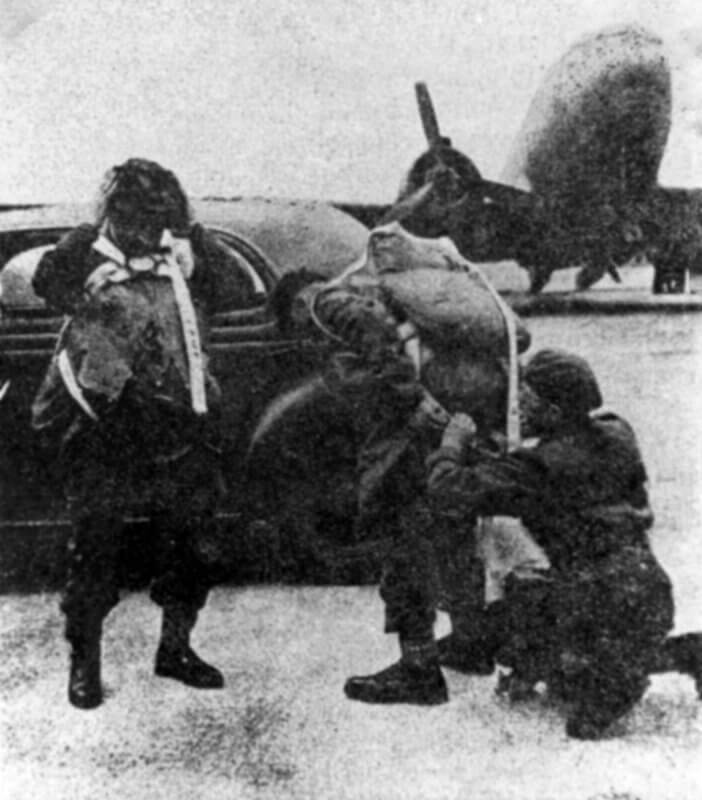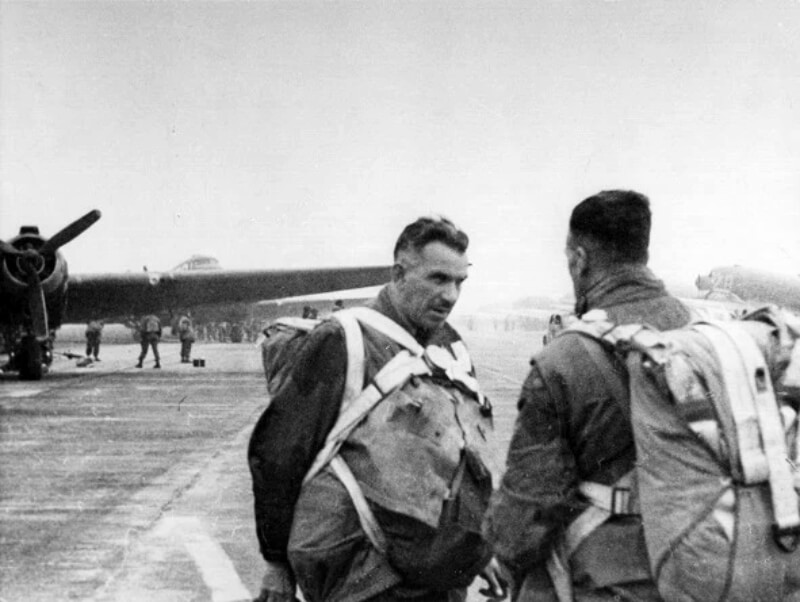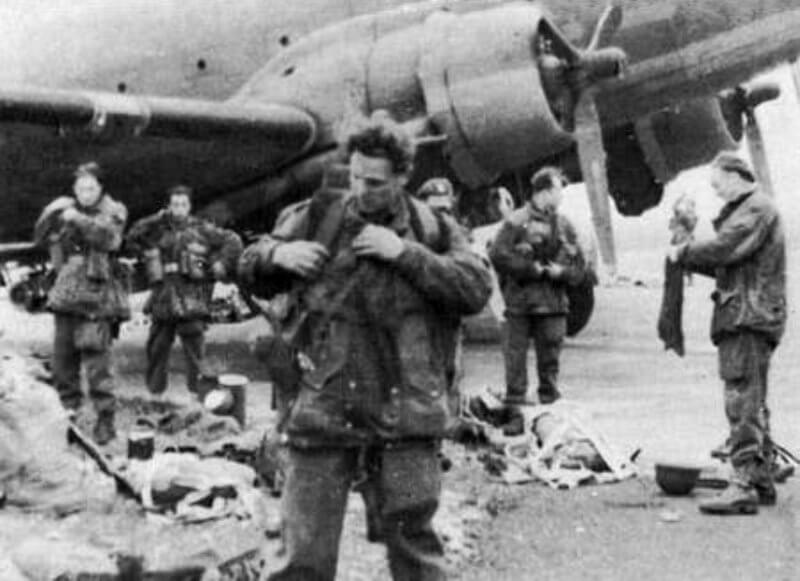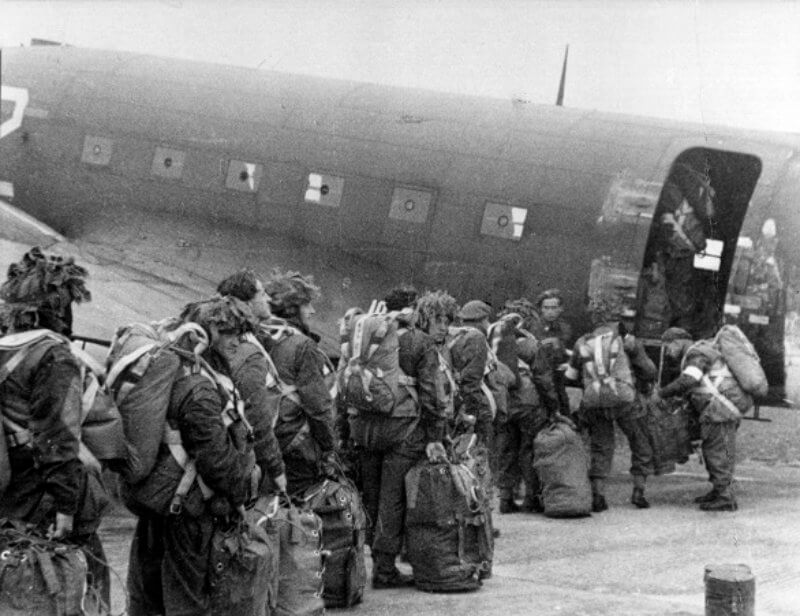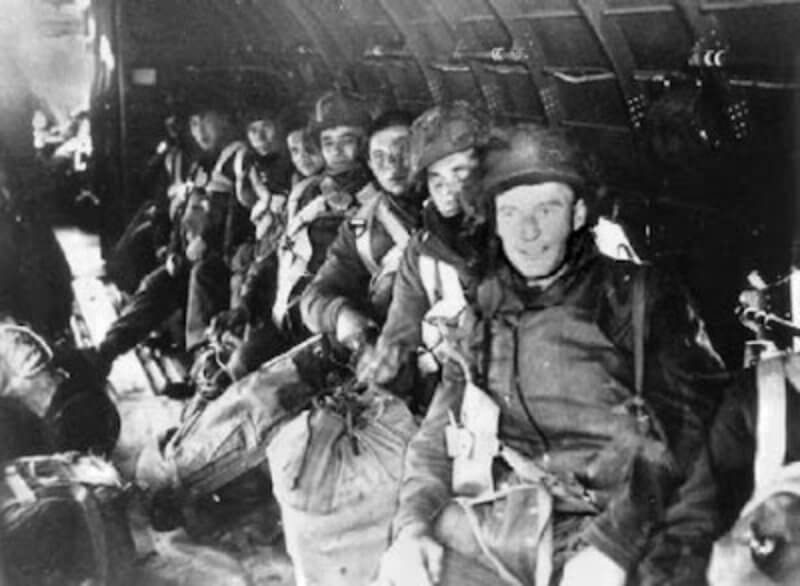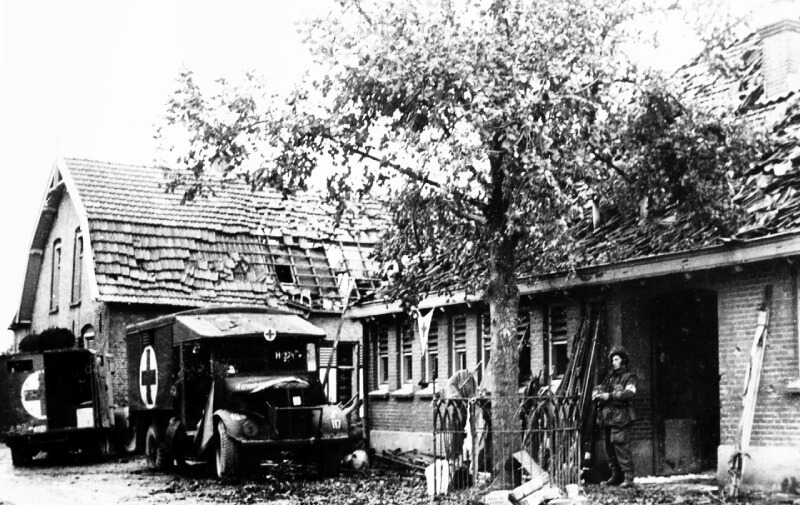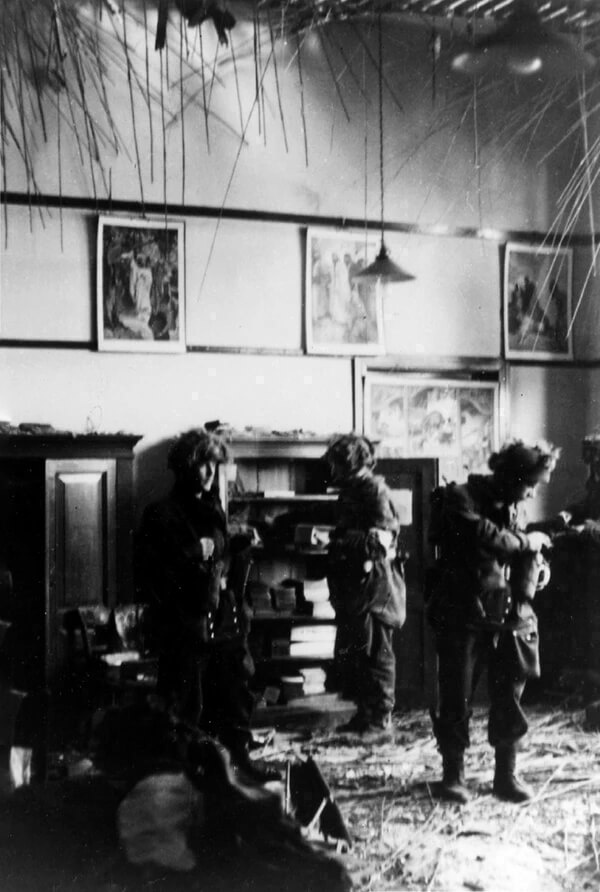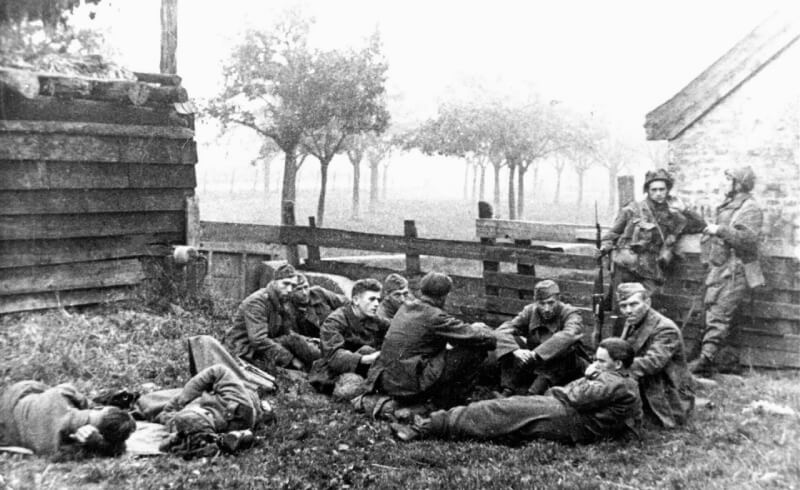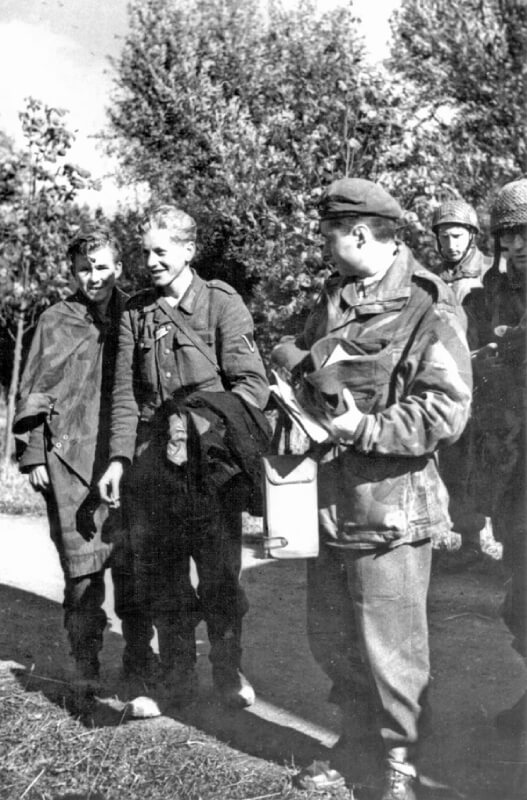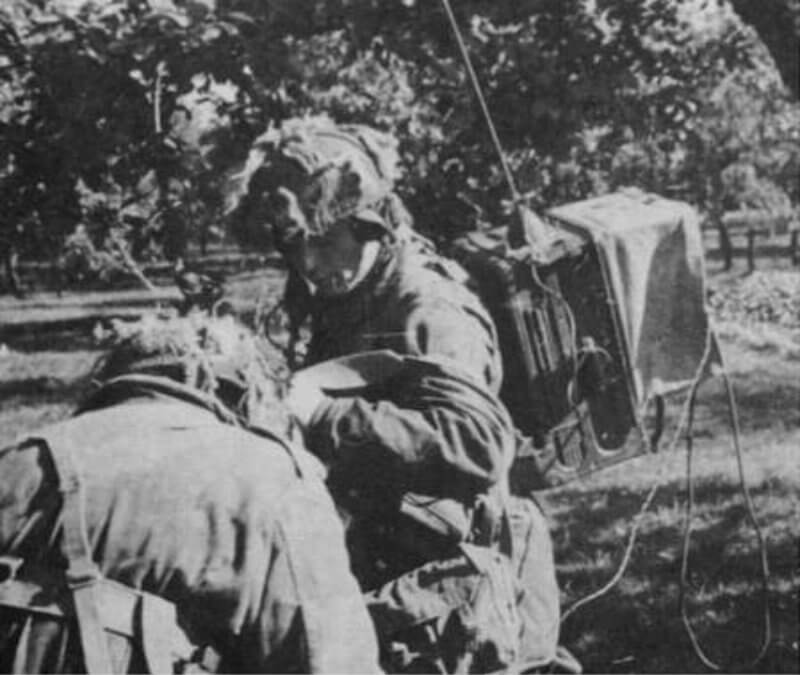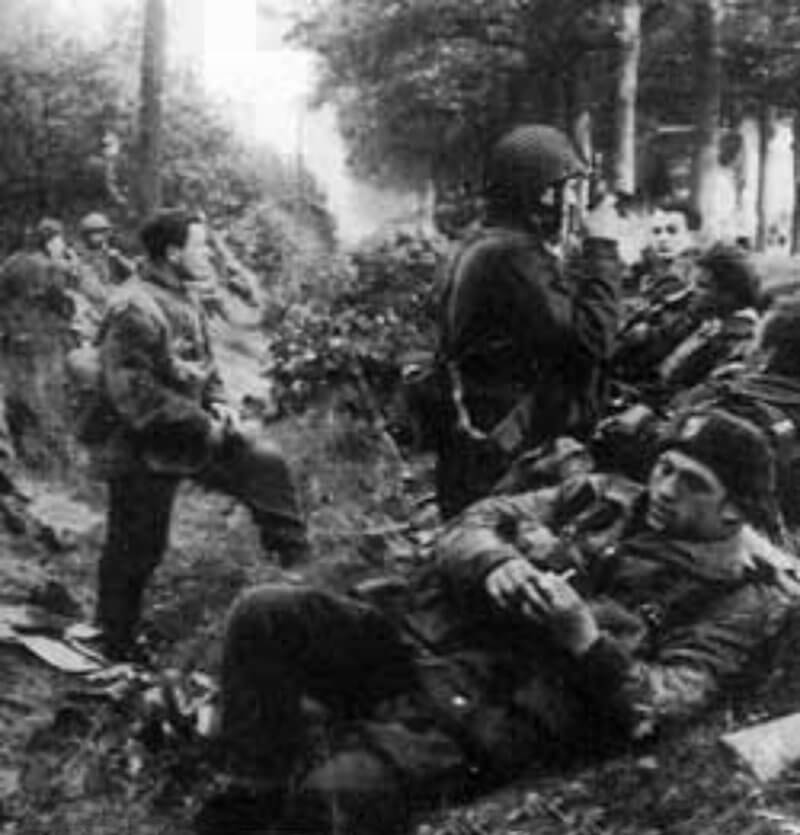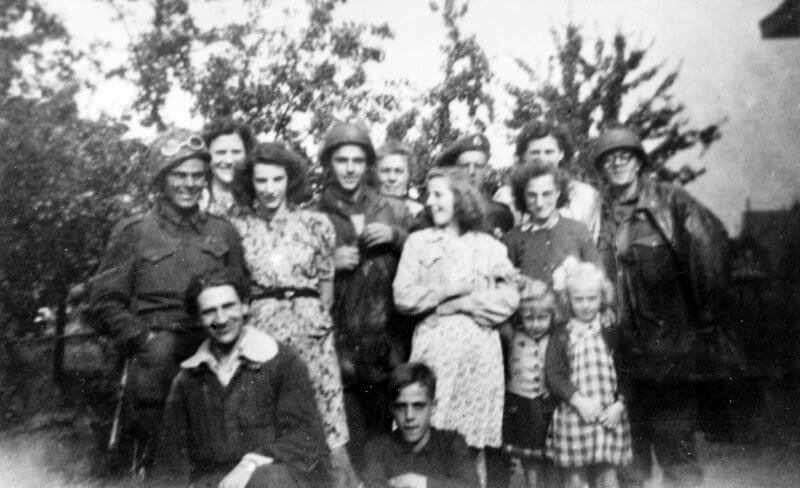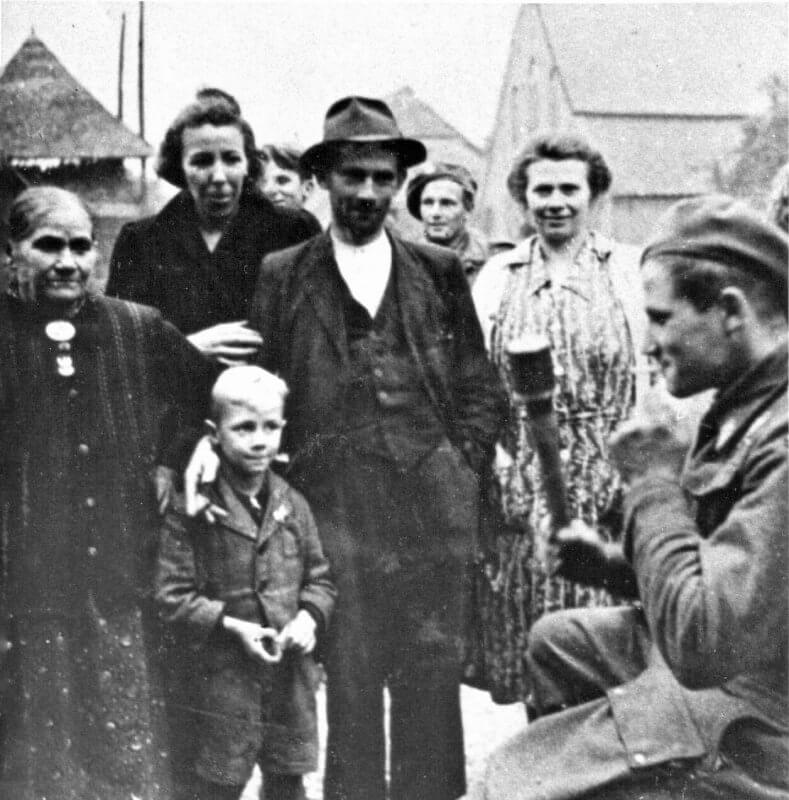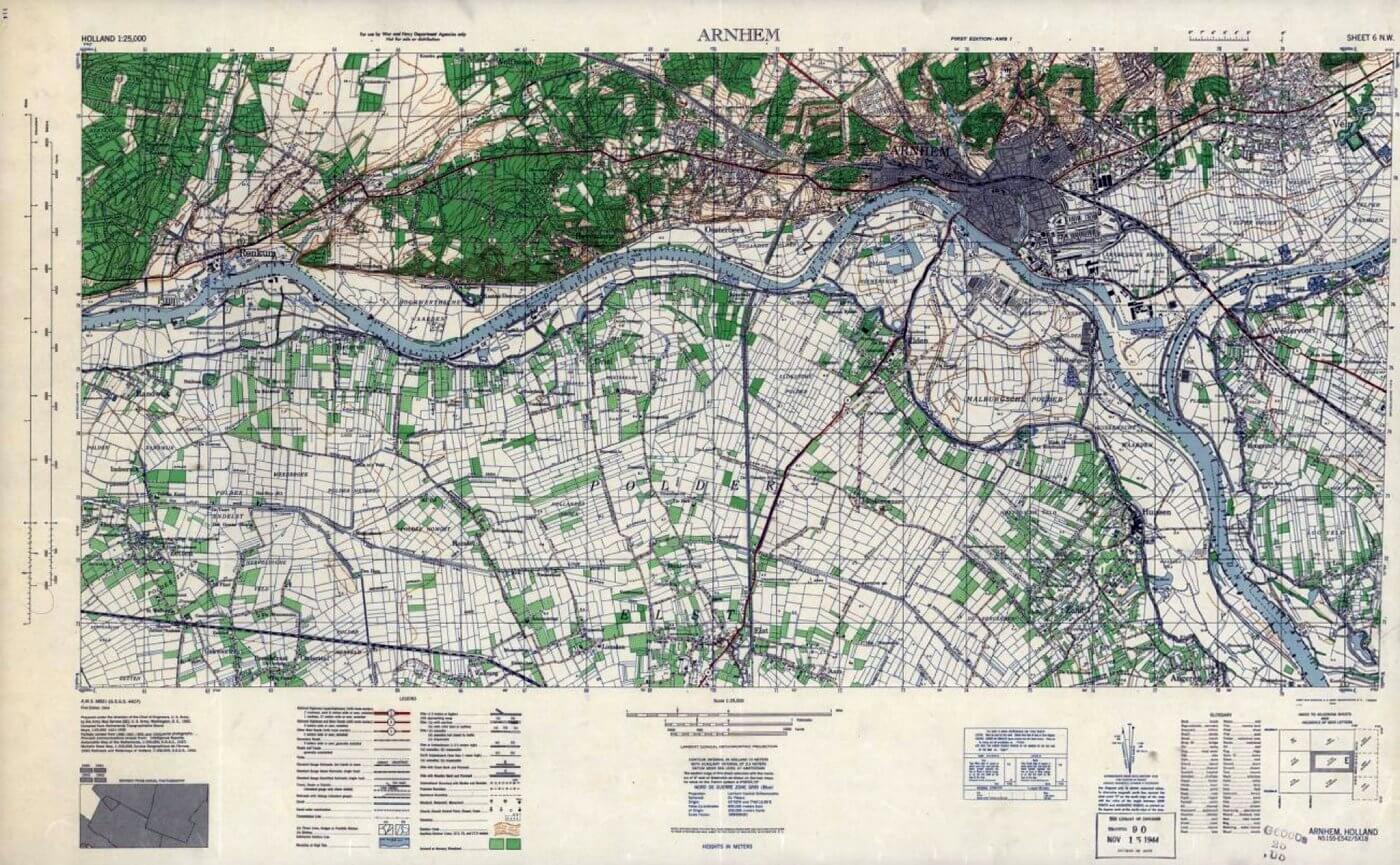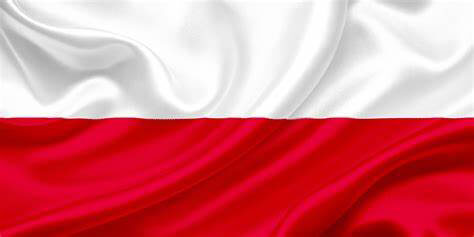| September 17th, 1944 – September 26th, 1944 |
| Operation Market Garden |
| Objectives |
- Land at Landing- and Drop Zones at Wolfheze, Oosterbeek, and Ede.
- Capture the road bridge in Arnhem and hold it for a minimum of 48 hours
- Link up with the advancing ground forces of the 30th Corps.
| Operational Area |
Arnhem Area, The Netherlands
| Allied Forces |
- 1st Airborne Division
- 1st Polish Independent Parachute Brigade
- 52nd, (Lowland) Airlanding Division
| Axis Forces |
- II SS-Panzer-Corps
- 9. SS-Panzerdivision “Hohenstaufen”
- 10. SS-Panzerdivision “Frundsberg”
- Kampfgruppe von Tettau
- Feldkommandantur 642
- SS-Unterführerschule Arnheim
- Bataillon I
- Bataillon II
- Bataillon III
- SS-Polizei Schule
- SS-Ausbildungs und Ersatz Bataillon 4
- Bataillon I
- Bataillon II
- SS-Wach Battalion 3
- Schiffsturm Abteilung 10
- Schiffsturm Abteilung 6/14
- Fliegerhorst Battalion 2
- Fliegerhorst Battalion 3
- Artillerie Regiment 184
- Sicherheit Regiment 42
- Kampfgruppe Knoche
- Sicherheit Regiment 26
- Bataillon I
- Bataillon II
- MG Bataillon 30
- FlaK Abteilung 688
- Bataillon I
- Bataillon II
- Hermann Göering Schule Regiment
- Hermann Göering Schule Regiment
- Bataillon I
- Panzer Abteilung 224
- SS Ersatz Abteilung 4
- Deelen Airfield FlaK Kompanie
- Wach Kompanie
- Reichs AD
- Hermann Göering Schule Regiment
- Sicherheit Regiment 26
- Kampfgruppe Kraft
- SS-Panzer Grenadier Ausbildungs und Ersatz Bataillon 16
- Schwerepanzer Abteilung 506
- Schwerepanzer Kompanie Hummel
- StuG Abteilung 280
- Artillerie Regiment 191
- Bataillon I
- Bataillon II
- Bataillon III
- SS-Werfer Abteilung 102, Hauptsturmfürer Nickmann
- Kampfgruppe Brinkmann
- Kampfgruppe Bruhn
- Kampfgruppe Harder
- Sperrverband Harzer
- MG Bataillon 47
- Marine Kampfgruppe 642
- Kampfgruppe Schörken
- Kampfgruppe Kauer
- SS-Abteilung “Landstrum Nederland”
- Kampfgruppe Knaust
- Ersatz Abteilung Bocholt
- Panzer Kompanie Mielke
- Kampfgruppe Spindler
- FlaK Abteilung Swoboda
- Kampfgruppe von Allworden
- Kampfgruppe Weber
- Nachrichten Abteilung 213
- Sösterberg Fliegerhorst Battalion
- Kampfgruppe Henke
| Deployment of the 1st Polish Independent Parachute Brigade |
At 07:00, Major-General Sosabowski is informed by Lieutenant-Colonel Stevens that the ferry at Heveadorp is under British control and that the designated dropping zone remains unchanged. This confirmation provides the assurance needed for the operation to proceed.
With the new information, Sosabowski prepares for the take-off. A message comes from the Chief of Staff of the Allied Airborne Army, extending well wishes for the mission. Sosabowski immediately sends a coded telegram to Polish Headquarters, confirming that, weather permitting, the brigade will depart that day.
The 1,568 men of the 1st Polish Independent Parachute Brigade set out early for the airfields. Take-off is scheduled for noon, and Saltby Airfield is alive with activity. A persistent September mist covers the airfield, blurring the outlines of the hangars, control tower, and the hundreds of aircraft stationed there. Everyone awaits the signal to proceed.
Sosabowski makes his way around the airfield, answering questions from his troops. He is impressed by their spirits; despite the delays and cancellations from previous days, their enthusiasm for the mission remains undiminished.
At 11:00, the air crews begin preparing the aircraft. The crew members, many of them young, treat Sosabowski with respect. Given his age, they likely find it unusual to see a general participating as a parachutist.
As noon approaches, the mist continues to linger. The station commander invites Sosabowski for coffee, and he, along with Stevens and his aide Sieczkowski, heads to the airfield headquarters. While they are there, news arrives that the weather has cleared.
They rush back to the waiting planes, greeted by sighs of relief from the troops. Although some soldiers remain sceptical, with one sergeant nearby remarking that he won’t believe they’re leaving until they are in the air, the general mood is one of anticipation.
Sosabowski puts on his parachute and joins the line of soldiers awaiting inspection. The Stick Commander, Lieutenant Dyrda, calls the men to attention and oversees a final check of their parachutes and equipment. Once satisfied, Dyrda gives the order for the soldiers to board the aircraft.
Heavily laden with their gear, the soldiers make their way toward the aircraft. The crew assists them up the steps, and they take their seats inside. Conversation dies down as the men settle into the aircraft, awaiting departure.
Around 14:00, the order is given to proceed, and at Royal Air Force Saltby and Royal Air Force Spanhoe, the engines of 114 Dakotas from the 314th Troop Carrier Group and 315th Troop Carrier Group, start up.
Between 14:00 and 14:30 hours, the 1st Polish Independent Parachute Brigade’s paratrooper lift takes off from Royal Air Force Saltby and Royal Air Force Spanhoe airfields.
The American pilots encounter difficulties climbing through dense cloud cover and forming their designated formations. It is reported that one paratrooper mistakenly jumped over Cambridgeshire, but he later rejoins on a subsequent lift. As the weather continues to deteriorate, a decision is made to recall the aircraft to avoid unsafe landing conditions.
A miscommunication regarding the recall code added complexity to the situation. The radio operators in the aircraft had been given a different set of code words than those used by ground stations. The recall code was sent four times, but the interpretation varied among pilots. Consequently, 41 of the Dakotas turned back, with most landing at the nearest airfield upon descending through the clouds. There was also a report of one aircraft landing in Ireland.
Of the 41 aircraft that returned, 25 carried men from the 1st Parachute Battalion, 2 had passengers from the 2nd Parachute Battalion, 11 were transporting men from the 3rd Parachute Battalion, and 3 carried personnel from Brigade Headquarters.
The remaining 73 aircraft continue their flight over Belgium. During the journey, one Dakota carrying Brigade Headquarters personnel is hit by flak after inadvertently crossing into German-held territory. The aircraft turns back towards Belgium, where it drops its troops before returning to England. Meanwhile, the remaining 1,003 men in 72 aircraft continue their mission.
By 17:18 hours, the Brigade Group Headquarters and troops are dropped onto the designated drop zone. Heavy anti-aircraft fire greets them, resulting in the loss of five C-47s. Although all the paratroopers aboard manage to jump before the planes crash, ten American aircrew members lose their lives. The evasive maneuvres taken by the aircraft to avoid enemy fire throw the Polish paratroopers around inside the cabins, delaying their jump. As they descend, they come under fire from German troops on the ground, resulting in five fatalities and 25 wounded. Despite these challenges, the drop is deemed successful, and the Brigade encounters no significant resistance in the immediate area. The 72 aircraft successfully drop 957 personnel. Brigade Headquarters has no information regarding the remaining 42 aircraft. The Drop Zone is contested by enemy troops, and as the Brigade Group parachutes in, they suffer losses due to enemy shelling and mortar fire. Casualties include 4 fatalities and 25 wounded or injured. Additionally, 11 prisoners of war (PWs) are captured.
Five aircraft from the 315th Troop Carrier Group are shot down, but all the paratroopers manage to jump safely before the planes crash. One aircraft, damaged by anti-aircraft fire, dropped its stick of paratroopers in Belgium, but all these troops eventually rejoin the Brigade Group later at Driel. Unfortunately, 10 American aircrew members are killed, with others wounded or captured.
The 550 Polish paratroopers aboard the planes that returned face a further 48-hour delay before they are eventually dropped near Grave, within the 82nd Airborne Division’s area, on Saturday, 23rd September. At that point, the original drop zones closer to the Rhine are deemed too hazardous.
| Initial Actions |
Upon landing, Sosabowski and his staff quickly set up operations. The drop zones are under enemy fire, and many troops must fight their way to the safety of nearby woods. At the brigade’s rendezvous point, Sosabowski is relieved to find his aide-de-camp, whose wife’s faith in his luck had proved justified. A wireless operator is already trying to establish communication with various units.
Allied mortar smoke drifts across the fields, shielding the advancing troops. While sitting by the roadside, Sosabowski notices ripe apples hanging from a tree. He picks one and eats it, soon joined by Colonel Stevens. The two men share a rare moment of calm before the battle resumes.
Sosabowski learns that all his headquarters staff have arrived, except for the Intelligence Officer, whose aircraft had been shot down. Fortunately, the officer parachuted safely and is expected to rejoin them soon.
Following his instructions received in England, Sosabowski quickly organises his forces. The Signals Officer informs him that they have made contact with all units except the 1st Battalion. The 2nd and 3rd Parachute Battalions are ready to move, and other units are assembling. Sosabowski orders him to establish communication with 1st Division Headquarters so he can speak with General Urquhart. However, attempts to reach them are unsuccessful, as the radio batteries have drained, leaving the British almost entirely cut off from communication.
Recognising that the communication problem is unlikely to be solved, Sosabowski dispatches a strong reconnaissance patrol to check on the status of the ferry. He orders the battalions to advance toward the ferry, trusting that the 1st Battalion commander will follow previous orders, despite being out of contact.
As night falls, the brigade begins its march. The 2nd Battalion moves through Baarskamp and Driel, positioning itself opposite the Heveadorp ferry, while the 3rd Battalion moves along the Neder Rhine to secure the right flank. Along the way, the brigade encounters sporadic shelling and mortar fire, forcing the troops to dive into ditches for cover.
Once on the ground, the Polish paratroopers quickly regroup. The 3rd Parachute Battalion takes up positions along the riverbank, opposite and just south of Oosterbeek Old Church, where the Lonsdale Force is based. Meanwhile, the 2nd Parachute Battalion moves towards the Driel-Heveadorp ferry, intending to use it to cross the Rhine and join the Oosterbeek perimeter.
Near a crossroads, a young woman, informs Sosabowski that the ferry has been destroyed and that the Germans control all nearby crossings with machine guns and artillery. Sosabowski waits for confirmation from the reconnaissance patrol, but Baltussen’s warning aligns with his growing concerns.
Unknown to both sides is the fact that the ferry operator has scuttled the ferry after witnessing the German capture of Westerbouwing, to prevent its use by the Germans. At 19:00 hours, a reconnaissance patrols from the Brigade Group reach the ferry area at Driel. The Polish are also unaware that the area across the river is now occupied by German forces. Lieutenant S. Kaczmarek of the Support Echelon is sent by Sosabowski, along with Captain Budziszewski, the Engineer Company commander, and fifteen men, to the ferry site. They arrive after about an hour, under the cover of darkness. Upon reaching the ramp, Captain Budziszewski calls out with a loud “Hello,” but there is no response from the opposite bank. He then launches a flare, which immediately triggers heavy gunfire from the other side.
The team quickly takes cover behind piles of cobblestones, miraculously avoiding injury as bullets ricochet off the stones around them. The gunfire continues for about five minutes before subsiding. Once the firing ceases, the group withdraws to Driel and reports back on the situation. By 21:00 hours, they report to Sosabowski that the ferry has been sunk, and the northern bank of the Rhine is held by enemy forces. Troops on the southern bank are under machine gun and mortar fire. It becomes evident that no further action can be taken that night.
Confronted with this new information, Sosabowski devises an alternative plan. Major-General Sosabowski sets up the headquarters in the home of miller Beijer. This location serves as the command centre for the Polish forces as they prepare for their defensive operations. Unable to cross the Rhine to reinforce the British airborne forces in Oosterbeek for now, the 1st Polish Independent Parachute Brigade withdraws to the village of Driel. They establish defensive positions around the De Nevel farm, preparing for the possibility of an enemy attack. The soldiers dig foxholes and settle in, ready to defend their position.
A few soldiers are assigned to guard the eleven prisoners of war. Two of them are Polish individuals who had been forcibly conscripted into the German military. As they wait for the enemy’s next move, the Polish troops hold their ground, anticipating further conflict while dealing with the complexities of the situation.
Meanwhile the medical company of the 1st Polish Independent Paratrooper Brigade selects the Roman Catholic primary school as an emergency hospital. Prior to the fighting, the school had sheltered refugees from the western part of the Netherlands, but now it is prepared to receive Polish patients. The medical team of the brigade, including doctors and hospital soldiers wears body armour to protect them during their work. They eventually treat 159 wounded individuals, including Polish and British soldiers as well as Dutch civilians.
At 22:30 hours, Captain Zwolanski, the 1st Polish Independent Paratrooper Brigade’s Liaison Officer to the 1st Airborne Division, covered in mud and soaked from head to toe, arrives from 1st Airborne Division Headquarters and delivers a situation report. He swam the river Rhine to reach his parent unit. The 1st Polish Independent Paratrooper Brigade is ordered to cross the Rhine and take over a defensive sector on the northern bank. However, they face a significant challenge due to a lack of boats and rafts to facilitate the crossing. British forces plan to counterattack to clear a section of the northern bank and will send over the necessary boats and rafts to enable the Brigade Group to cross.
After hearing Zwolanski’s message, Sosabowski goes down to the riverbank to ensure that patrols remain vigilant. The Germans continue their steady artillery and mortar barrage. As the night wears on and dawn approaches, there is still no sign of the rafts.
At midnight, the Brigade Group Commander holds a conference with unit officers near the ferry area. The order of crossing is established: the 3rd Parachute Battalion will cross first, followed by the 4th Parachute Company from the 2nd Parachute Battalion, then Brigade Group Headquarters and special units, with the 2nd Parachute Battalion crossing last. The group prepares to implement the crossing plan despite the ongoing challenges and enemy presence.
| Efforts to Reestablish Contact and Cross the Rhine |
Major-General Urquhart observes the Polish Brigade’s drop from Oosterbeek. Wireless equipment is promptly moved closer to the river and set up to establish communication with the Polish Brigade. Ensign Pajak repeatedly tries to contact them but no response comes from the Polish. As time passes and dusk settles in, anxiety grows. Orders from Divisional Command are clear: contact the Polish Brigade as soon as possible. The situation is dire, the Brigade has landed amidst German positions, is at least 16 kilometres from the first units of XXX Corps, and is separated from friendly forces by the river.
Their mission is urgent: the Brigade must provide assistance quickly. However, it remains uncertain how they will achieve this and which direction they will move. Those present gather around the wireless apparatus, waiting for any sign of contact. Eventually, it is clear that waiting any longer is not an option. The Polish Brigade’s liaison officer with the Airborne Division Command, Captain Zwolanski, decides to cross the river himself and requests a boat, needing to inform Sosabowski that an attempt will be made to recapture both Westerbouwing and the ferry crossing.
Unfortunately, no boat is available, and Captain Zwolanski resolves this to swim across the river. He goes to the battery command, removes his uniform, and dons camouflage netting to make the crossing as easy and dry as possible. He chooses to swim at the location where the ferry usually operates, assuming the Brigade will head in that direction to find a way across. It is a risky operation, as all crossing points are under German control. All they can do now is wait for the return of Captain Zwolanski.
Meanwhile, General Urquhart orders the 1st Airborne’s engineers to construct makeshift rafts using Jeep trailers, hoping to ferry the Polish troops across the river near Oosterbeek Church.
Despite these efforts, the attempt to retake Westerbouwing fails, and the construction of the rafts proves slow and laborious. By dawn, the rafts are still not ready. Similar attempts by the Polish forces on their side of the river to build rafts and find boats also end in failure. With no viable means of crossing the Rhine, Sosabowski orders the Brigade to establish defensive positions around Driel for the night.
| Polish Airborne in Oosterbeek |
The Polish anti-tank Battery remains in position near Oosterbeek, enduring sustained mortar and artillery bombardment, which leads to additional casualties.
| Multimedia |
